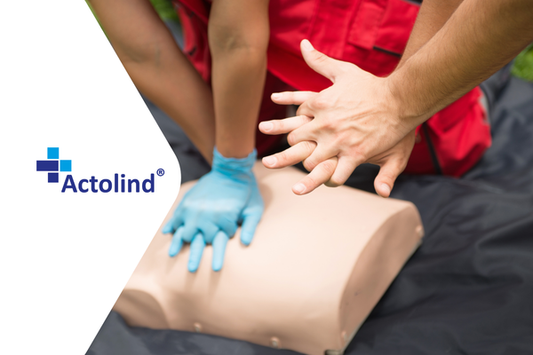How to guide children towards independence in treating minor injuries
Children are naturally curious, active and sometimes a little wild. The playground, the bike or even a simple game at home can end in a scratch, abrasion or blister. For parents, this is the moment when first aid comes into play - and this is a great opportunity to lead children to independence from an early age and teach them basic self-care.
Teaching children how to handle minor injuries is not only practical, it is a skill that will give them self-confidence, a sense of responsibility, and prepare them for situations in life.
How to do it
Explain clearly
Children need to know why it is important to clean and protect a wound. Don’t use complex words, but use simple comparisons: “When you scratch yourself, dirt can get into the wound. The spray will clean the wound and the plaster will protect it so it can heal quickly.”
Involve children in the process
Don't do everything for them, show them how they can rinse the wound themselves, spray it with a spray, and apply a plaster. Younger children can at least choose a plaster with a cheerful picture, older ones can master the simple first aid procedure.
Keep a first aid kit within reach
A home or travel first aid kit should be easily accessible and safe. It should include:
- disinfectant wipes or antiseptic spray suitable for rinsing the wound, which is also suitable for children because it does not sting,
- antimicrobial spray for wound treatment
- plasters of various sizes,
- sterile squares.
Show children where the first aid kit is and how to use it.
Play "little doctors"
Children learn best through play. You can play together at caring for stuffed animals or dolls. This way they will learn the correct procedure without realizing it and will know what to do in a real situation.
Encourage independence step by step
Start by letting your child rinse the wound themselves. The next step can be to use the spray under your supervision. Gradually give them more space. But always supervise to ensure proper and safe care.
Praise and motivate
Every little bit of progress deserves praise. This gives children the feeling that they are really doing something on their own, which motivates them to keep learning.
Conclusion
Guiding children to become independent in treating minor injuries is teaching them skills that will last a lifetime. It is a way to give them confidence and prepare them to know how to cope if an accident happens.
💡 Tip: Always keep a handy antiseptic spray at home or in your backpack. Children will quickly love it, as a simple spray is often more fun than classic drops or solutions.
✅ Checklist for parents: How to teach children independence in first aid
- Show the basic steps – rinse, clean, protect.
- Teach children how to use a spray bottle – even the smallest ones can handle a simple spray.
- Practice applying plasters – let children choose a plaster and apply it.
- Keep a children's first aid kit - smaller, clear and accessible.
- Involve the game – care for stuffed animals or dolls together.
- Give clear and short instructions – “wash, spray, stick.”
- Encourage independence gradually – start with a small task and add more.
- Praise every attempt – even if it’s not perfect, the effort is what matters.
- Set an example – show that you too use the spray and plaster when you get hurt.
- Repeat and remind – children learn through habit, so repeat the process.





